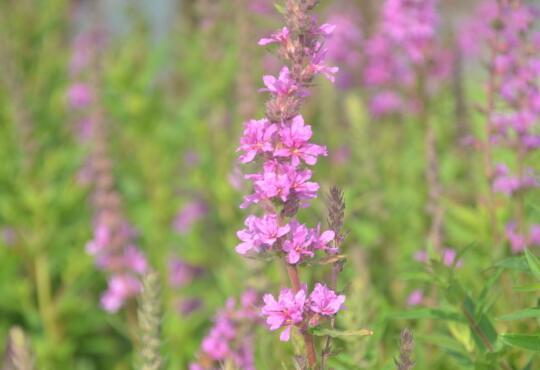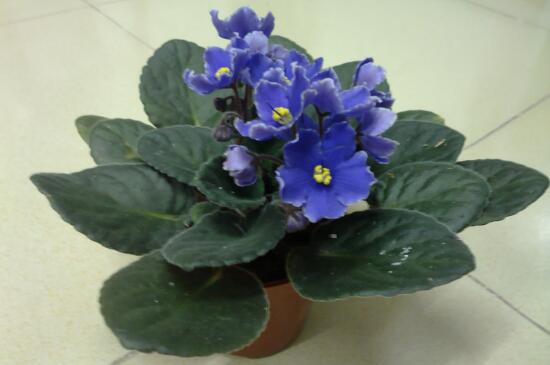How to deal with the long insects of Lysimachia, Lysimachia pest control/2 pests 2 diseases
When we breed Chichu, the last thing we want to encounter is diseases and insect pests, this kind of problem is very harmful to the plant, not only affect its ornamental, but also lead to plant death in serious cases. So what should I do if the worms grow up? How do you need to do the pest control of Chiqingcai? Next, the editor will take you to learn about it.
First, how to do when the worm grows? find the reason.

If you want to know what to do with the long worm, we must first understand what kind of worm it is, so that we can deal with it pertinently, because the treatment methods of each kind of diseases and insect pests are different, and the details are described in detail below. Friends who are troubled in this respect can learn about it.
2. Pest control (pest control) of Chimonanthus chinensis
1. Aphids
Aphid is a plant-eating insect of Homoptera, it can be said to be one of the most destructive pests on earth, and it is harmful to most plants. This kind of pest mainly harms the leaves, stems, tender heads and ears of Qianqu. It will gradually absorb the juice, so that the plant nutrients will be lost, and finally gradually withered.
Control method: when we deal with the diseases and insect pests of Chichu, we can spray it with 1000 times of 50% marathon emulsion or 1500 times of 2000 times of imidacloprid water solvent.
two。 Red spider
Among the diseases and insect pests of Chichu, the red spider has a relatively high incidence, and its high incidence period is in the summer every year, so at this time we must pay special attention to the fact that when this kind of pest occurs, the leaves of the plant will gradually turn yellow and whiten, and if it is not treated for a long time, it will also lead to the phenomenon of plant wilting.
Control method: when we deal with the pest of red spider, we can directly use 40% diclofenac EC 1000-1500 times to spray, generally three times in a row can completely kill this pest.
3. Pest control (disease) of Lysimachia chinensis.
1. Mosaic disease
Mosaic disease is a worldwide virus disease, which does great harm to Lysimachia chinensis. At the initial stage of the disease, chlorotic angular disease spots appear on the leaves, and finally turn brown. In serious cases, it will also affect the yield and quality of cut flowers.
Control method: when we deal with this kind of diseases and insect pests, we can use 1000 times of dimethoate EC to spray the plant, usually once every 10 days, and can be cured after 2-3 times.
two。 Powdery mildew
Powdery mildew is a disease with a high incidence. This disease mainly threatens the leaves of plants. There will be many dust-like mildew spots on the leaves when the disease occurs, which will cause the leaves to turn green at the initial stage, and in serious cases, the whole leaves will be covered with powdery mildew layer. As a result, the plant can not carry out photosynthesis and gradually atrophy.
Control methods: in the prevention and control of this kind of diseases and insect pests, we can use 1000 times of methyl topiramate wettable powder to spray the plant, usually once every 10 days, about 2-3 times can be cured.
Prevention and Control of main Diseases and insect pests of Chimonanthus chinensis
The main diseases and insect pests are spot disease, which produce oval or irregular disease spots on the leaves, grayish brown, no edge, and black spots on the leaves. The disease is easy to occur in dry weather and high temperature.
Prevention and control methods:
① cleans the countryside before overwintering
At the initial stage of ②, 75% chlorothalonil or 50% carbendazim was sprinkled.
How to raise Qianchi, the breeding methods and precautions / sunshine should be sufficient.
It can be seen in Asia, Europe, Africa and other regions, but it is not easy to raise it well, and there are many places that need to pay attention to. About how to raise Chiqu vegetables? What are the breeding methods and matters needing attention of Qianqu? Next, the editor will take you to learn about it.
First, how to raise Qianqu vegetables and understand their habits
If you want to know how to raise Chikki, first of all, we need to understand its growth habits. This plant likes a sunny environment and is relatively hardy. It can be said that its survival ability is very strong, but it wants to make it grow better. Then daily water and fertilizer management cannot be careless. Specific maintenance techniques are described in detail below. Let's take a look at that.
2. Culture methods and matters needing attention of Qianqingcai
1. Humus soil
We first need to choose soil before raising Chiqu, which is a step to lay a good foundation and is very important. generally speaking, it is best to choose loose and fertile humus soil, which is rich in organic matter. and drainage and air permeability are better, can make the plant grow better.
two。 Fertilize, once a month
Fertilizer is one of the main nutrients in the growth process, especially after entering the growth period, its demand for fertilizer is very large, basically every other month to apply fertilizer. However, there is one thing we should pay attention to when applying fertilizer, that is, the fertilizer must be diluted with water first. If the concentration is too high, it will burn the plant.
3. Moisture, avoid stagnant water
Watering is an indispensable link in the growth process of a plant, and Chichu is no exception. When we breed it, we should water it frequently to keep the soil moist, so that it can grow better. However, we need to pay attention to the control of watering. This kind of plant is not resistant to waterlogging, if it causes stagnant water, it is easy to cause its roots to rot.
4. Sunshine, sunshine should be sufficient.
This kind of plant prefers sunny environment, the stronger the light, the better it will grow, because in this way it can better carry out photosynthesis. Therefore, when we breed it, it is best not to put it in the shade, otherwise it will affect its growth, and in serious cases, it will lead to plant atrophy and death.
5. Timely prevention and control of diseases and insect pests
When we breed Chichu, if we are not careful enough, it is easy to let diseases and insect pests enter while we are not careful. This kind of problem is very harmful to the plant, so we must deal with it in time when we find the problem, because the longer the time drags on, the greater the harm to the plant will be. As for the specific treatment methods, you can refer to the article on pest and pest control of Qianchi, which is described in detail.
- Prev

What should we do if the Phoenix tree grows insects? pest control of Phoenix wood / 2 insect pests 2 diseases
When we cultivate Phoenix wood, the last thing we want to encounter is diseases and insect pests. This kind of problem is very harmful to the plant, which will not only affect its ornamental, but also lead to the phenomenon of plant withering and death. What about the Phoenix wood worm? How to prevent and control diseases and insect pests of Phoenix wood
- Next

African violet long insects how to do, African violet pest control/2 insects 3 diseases
As a beautiful flower, African violet has many effects. It not only looks good, but also drives mosquitoes and beautifies the home. But indoor cultivation, because the environment is too poor, improper maintenance, plants usually grow insects sick, then African violet long insects how to do it?
Related
- Fuxing push coffee new agricultural production and marketing class: lack of small-scale processing plants
- Jujube rice field leisure farm deep ploughing Yilan for five years to create a space for organic food and play
- Nongyu Farm-A trial of organic papaya for brave women with advanced technology
- Four points for attention in the prevention and control of diseases and insect pests of edible fungi
- How to add nutrient solution to Edible Fungi
- Is there any good way to control edible fungus mites?
- Open Inoculation Technology of Edible Fungi
- Is there any clever way to use fertilizer for edible fungus in winter?
- What agents are used to kill the pathogens of edible fungi in the mushroom shed?
- Rapid drying of Edible Fungi

